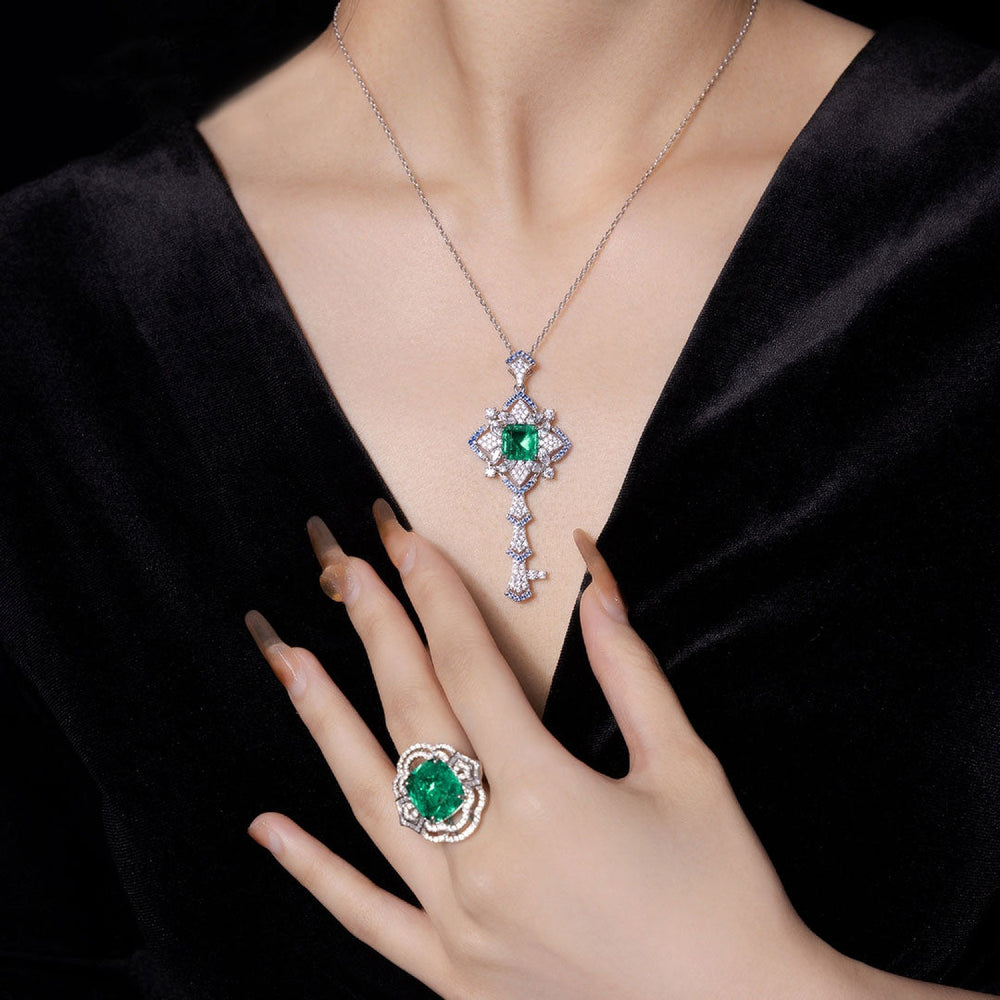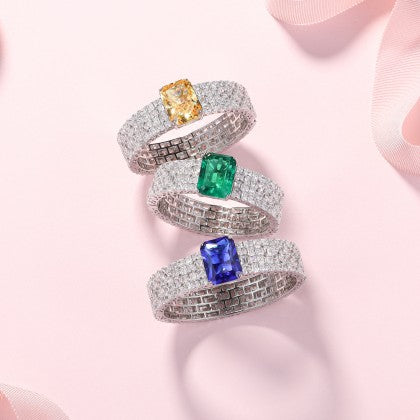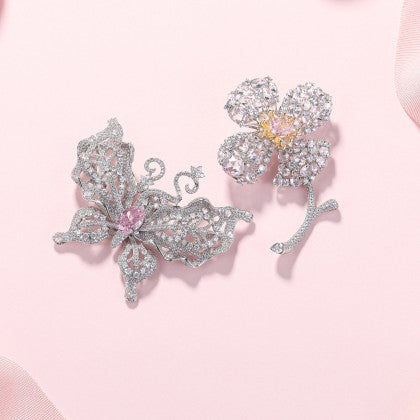As one of the oldest and most widely circulated mythological symbols, the snake is a mythological symbol of countless civilizations, representing power, wisdom and eternity. The dynamic snake has always been active in jewelry works of different eras.
In this guide, we will explain the following:
- 1.Female stars love "snake" element jewelry
- 2.The history of snakes
- 3.The unique significance of snakes in different cultures around the world
- Egypt
- Ancient India
- Victorian
- 4."Snake" and women have always been inseparable
- 5.how did the snake enter the jewelry circle and become popular today?
- Summarize

Today's spirit snake jewelry has a variety of shapes, and the simple and powerful lines can deduce a variety of charms from concrete to abstract. It must have a place as a fashionable weapon for female stars!
1.Female stars love "snake" element jewelry
Recently, Zendaya, the girlfriend of "Spiderman" who has been out of the circle because of her extraordinary fashion expression, has also become a full-fledged Bulgari snake fan.

Zendaya
In fact, many female celebrities have chosen snake-shaped jewelry when attending events and red carpets.

Miley Cyrus

Bella Hadid
Taylor Swift's 2017 hit single "Look What You Made Me Do" is full of snakes.


In order to shoot this "snake-like" MV, Taylor Swift collected almost all snake-related jewelry.
2.The history of snakes
As one of the oldest and most widely spread mythological symbols, the agile snake has always been active in jewelry works of different eras.

Snake jewelry first appeared in ancient Egypt, in the form of a ring connected end to end. This unique form is called "Ouroboros", which means regeneration, circulation and eternal life, and this symbol is still the symbol of countless jewelry in subsequent history. source of inspiration.

Serpentine earrings, mid-19th century
Of course, this unique totem also has completely different symbols in different cultures:
The ancient Egyptians believed that snakes represented loyalty and divinity;
Celts (Celts) believed that snakes symbolized mysterious knowledge;

Hermes Snake Staff
Hermes is the messenger of the gods and the god who controls the transfer of property rights (commercial transactions, theft). His most famous symbol is the Caduceus in his hand, with a pair of wings on the top of the scepter and the scepter is entangled by two snakes.
In Greek or Roman mythology, snakes are also symbols of rebirth, protection, and wisdom.
The ancient Romans regarded the snake as the patron saint of home safety, implying eternal life.

Scepter of Asclepius
Asclepius is the god of medicine in mythology. The snake-coiled scepter is a symbol of medicine and the medical world. On European buildings, the goblet with snakes is often seen, which is the logo of the pharmacy. The use of such elements is derived from the mythical god of medicine - Asclepius.
In addition, as modern people, we are more familiar with the common symbol of the snake around the crutch in the field of medicine.
3.The unique significance of snakes in different cultures around the world
In Greek or Roman mythology, snakes are symbols of rebirth, protection, and wisdom.
In ancient Rome, it was the patron saint of house safety;
In the West, Hermes, one of the twelve main gods of Olympus in Greece, is the patron saint of merchants, and his Hermes scepter has become a symbol of wealth (two snakes).

In the Bible, it was also a wise snake who tempted Eve to eat the forbidden fruit. If there is a creature in the world that is both good and evil, snakes are probably the best of them.
In addition, snakes are a very important part of culture in many countries.
Egypt
In ancient Egypt, the snake emblem was a symbol of royal power, and most pharaohs wore the snake emblem of a single cobra. Among the Egyptian gods, the snake is also one of the most frequently appearing animal images.

In ancient Egyptian mythology, the snake was considered the "son of the earth" and had the creativity of the original life. In addition, the god of abundance is also in the shape of a snake, and is an important protector of human reproduction and life. At the same time, ancient Egyptian mythology believed that the universe was controlled by two serpents, one representing justice and the other representing evil, and their struggle formed day and night. The snake god is not only the protector, but also the source of evil.
Ancient India
As one of the four ancient civilizations in the world, India also has a long history of snake culture. In ancient India, ouroboros symbolized the cycle of life, death and rebirth. Ancient Indians believed that the most precious rubies, sapphires and diamonds were always hidden deep in the valley full of poisonous snakes. Therefore, they regarded snakes as the patron saint of jewelry, and skilled craftsmen frequently used its image in jewelry design . According to Indian ancestors, the snake fundamentally represents death and subsequent rebirth. Snakes will undergo several molts as they grow, which is considered death, and after each molt, the snake will emerge with a new image and fresh flesh and blood, which is rebirth.
Victorian
When it comes to snake jewelry, one has to mention the Victorian period. During the Victorian period in England, snake-shaped jewelry was particularly sought after. This trend originated from Queen Victoria's preference for snake shapes. Queen Victoria liked the element of snakes since she was a child, and regarded the snake totem as a talisman to bless herself.

In 1840, Prince Albert presented Queen Victoria with a serpentine engagement ring with the emerald, the Queen's birthstone, in the center, symbolizing eternal life and eternal love. At that time, celebrities from all walks of life in Britain follow.
4."Snake" and women have always been inseparable
In fact, from ancient times to the present, women and snakes have an inexplicable relationship.
In different myths and cultures, snakes are always endowed with different female images, either good or evil, but they must all be beautiful in appearance.

"Fuxi Nuwa Picture"
For example, in oriental myths and stories, there is Nuwa who created the image of a savior with a human face and a snake body, and Bai Suzhen who knows how to repay her kindness. These are all positive symbols.

Of course, snakes were once a symbol of evil, insidiousness, and charm. The most familiar one may be Medusa, the snake-haired banshee in ancient Greek mythology.

In addition, we often use some idioms with the word "snake" to describe women, such as femme fatale, who has the most beautiful and seductive attraction, but also has a fatal risk.
5.how did the snake enter the jewelry circle and become popular today?

The earliest snake-shaped jewelry appeared in ancient Egypt. At that time, people believed that snakes represented loyalty and divinity. On the crowns of Egyptian pharaohs and queens, we can find snake-shaped totems made of gold and precious stones.

The famed Egyptian queen Cleopatra VII Philopator had such a reverence for snakes that she adorned much of her jewellery.

Gold serpentine armband worn by Opatra, 1st century BC
There are also legends that she let a snake bite herself to end her life and Egypt's life at the same time, which shows how much she respects and worships snakes.
In 1962, Elizabeth Taylor starred in "Cleopatra".

In the movie, Taylor wears a snake-shaped armband, which perfectly reproduces the aura and majesty of Cleopatra. She also wore Bulgari's snake-shaped bracelet watch in the promotional photos for the movie "Cleopatra". The snake head is painted on the dial, and the winding body is turned into a strap wrapped around the wrist. Bulgari's classic symbol.

In addition to our Cleopatra's love for snake elements, Queen Victoria also loved snakes since she was a child! She wore many snake-shaped bracelets when she was a girl, and later, her husband, Prince Albert, gave her an engagement ring that was also an emerald snake.

She even regarded this snake shape as a symbol of endless love, and it is said that she still wore this ring until she was buried.
The queen's preference made snake jewelry "fire" again, and snake elements became a trend in Victorian jewelry.

It is not difficult to find snake jewelry in the oil paintings of the 19th century. Most of the snake element jewelry in this period will be inlaid with various gemstones on the body of the snake, among which turquoise is especially common.

Snake bracelet, 1850
However, after the death of Prince Albert in 1861, the mourning dark gem materials gradually replaced colored gems, and snake-shaped jewelry inlaid with coal fines, hard rubber agate, ebony, and garnet became more common.


Woven in gold filigree, with rose-cut diamonds on the head and rubies on the eyes

Made for Cartier by Mexican actress María Félix, it is inlaid with 2,473 diamonds, the scales on the abdomen are enamelled, and the eyes are inlaid with emeralds

Serpenti necklace in white gold, by Bulgari
Set with diamonds totaling 228.85 carats


Snake Drop Sterling Silver Earrings with Water-shaped Ruby (Go shop)
Summarize
"Snake" and jewelry have been a perfect combination since ancient times. The snake-shaped symbol used in it symbolizes rights, good and evil, life, wisdom, reincarnation, and eternal life. No matter whether its symbolic meaning is righteous or evil, snakes and women have an inseparable fate. So next time you see snake jewelry, don’t feel intimidated, try to appreciate the unique charm of this snake!
A series of articles exploring the classic elements of jewelry design:
Explore Classic Jewelry Design Element: The Bee
Explore Classic Jewelry Design Element: The Snake
Explore Classic Jewelry Design Elements: The Magic of Feathers
Explore Classic Jewelry Design Elements: The Rose
This article was first published in https://dissoojewelry.com/ .Want to know more about jewelry with animal elements, click https://dissoojewelry.com/collections/soul-animal to learn more.












